Identify Mold Behind Stucco: A Homeowner's Guide
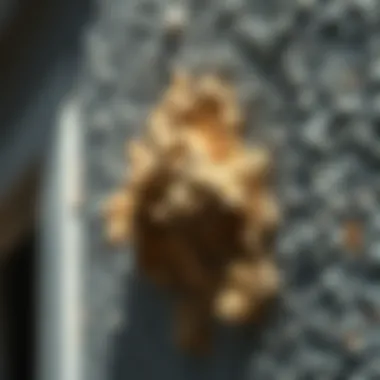
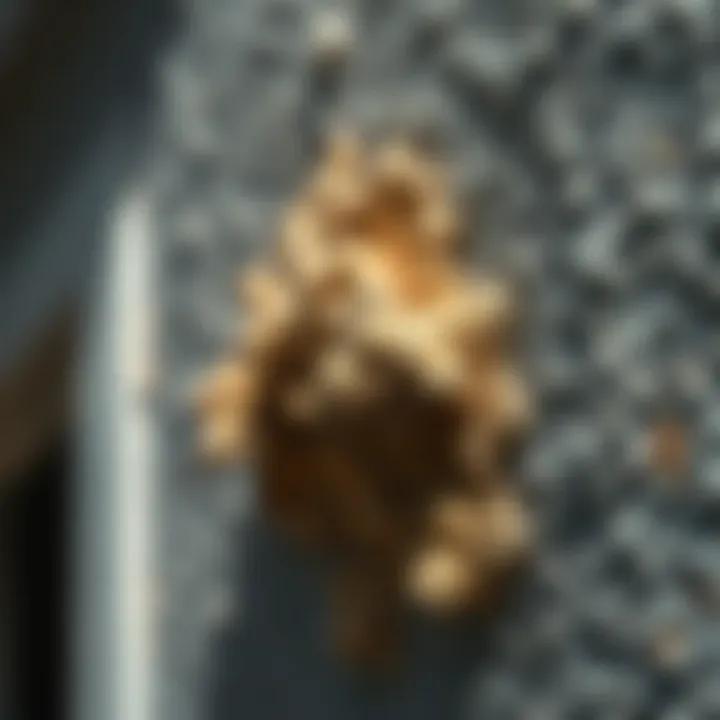
Intro
In this guide, you'll learn about the identification of mold, the risks associated with mold infestations, and the investigative techniques that will help you uncover any hidden issues. By being armed with this knowledge, homeowners will find it easier to implement preventative measures and gather remediation strategies, ensuring a safe living space and peace of mind.
Signs of Mold Behind Stucco
Identifying mold behind stucco can be tricky, but there are several telltale signs you can watch for:
- Visual Clues: Look for discoloration on the stucco surface. You might notice dark spots or patches, often resembling streaks or stains. This can indicate the presence of mold.
- Musty Odors: A persistent, earthy smell or musty scent in your home is often a precursor to mold lurking in hidden areas.
- Water Damage: Check for any signs of water leaks or damage in your stucco. Water accumulation can create a conducive environment for mold growth.
"Regular inspections are key to catching mold before it spreads."
It's crucial to act immediately if you observe any of these signs. Ignoring them can lead to not only health risks but also costly repairs down the line.
Investigation Techniques
Once you’ve spotted potential signs of mold, it’s time to get down to business. Here’s how you can investigate further:
Indoor Inspection
- Start inside your home near the stucco walls. Use a flashlight to inspect corners where the walls meet the floor, as this is a common area for mold growth.
- Consider using a moisture meter. If it shows elevated moisture levels, it could point to a mold issue behind the walls.
Outdoor Inspection
- Examine the exterior of your home. Look for cracks in the stucco or areas where water might collect. These can be pathways for moisture to seep behind the siding.
- Inspect gutters and downspouts; ensure they're functioning correctly to divert water away from the walls.
Assisting Tools
- Thermal Imaging Cameras: These can detect temperature variations that suggest moisture presence behind walls.
- Air Quality Tests: If you suspect mold, consider testing the air quality. These tests can determine levels of mold spores in your home atmosphere.
Prevention Strategies
Prevention is often easier than remediation. Implementing a few smart strategies will help keep mold at bay:
- Regular Maintenance: Ensure that your stucco is in good condition. Seal any cracks as soon as you spot them to prevent water intrusion.
- Proper Drainage: Make sure your yard slopes away from the foundation of your home. This helps prevent water from pooling close to the walls.
- Ventilation: Keep your home well-ventilated to reduce humidity levels. Use exhaust fans in kitchens and bathrooms to help manage moisture.
The End
Preamble to Mold Issues in Stucco
Mold growth can be a sneaky adversary for homeowners, particularly when it lurks behind the seemingly sturdy exterior of stucco. The presence of mold often spells trouble, not just for the aesthetics of your home but also for the health of those living within it. The significance of tackling mold issues in stucco can't be overstated, as a proactive approach can save considerable time, money, and discomfort.
When stucco is installed, it can create a beautiful façade that enhances the overall appeal of a home. However, when moisture gets trapped behind this exterior, it creates an ideal breeding ground for mold. Understanding this dynamic highlights the importance of monitoring for signs of mold and taking swift action when necessary.
Understanding Stucco and Its Vulnerabilities
Stucco, made primarily from cement, sand, and water, has been a popular choice for external walls for decades. It's durable, versatile, and can withstand the test of time. Despite these advantages, stucco isn't impervious to damage. Its porous nature allows water to penetrate, which, when combined with inadequate ventilation or minor leaks, can lead to moisture accumulation behind the walls.
What many homeowners overlook is that symptoms of mold behind stucco might not always be visible at first glance. Hidden moisture often sets the stage for mold spores, which can cause more than just structural damage. In fact, those tiny horror shows can cause respiratory issues and allergies, creating an environment that can make a house feel oppressive.
Thus, knowing the vulnerabilities of stucco systems is critical for homeowners. Identifying areas prone to moisture retention and addressing them early can mitigate future mold growth.
Identifying Common Signs of Mold
Recognizing the signs of potential mold invasion is essential in maintaining a healthy living environment. Homeowners should be vigilant. There are several tell-tale indicators that mold may be creeping behind your stucco.
- Discoloration or Staining: Dark spots or patches on exterior walls might signal mold presence. This can present as black, green, or brown spots resembling someone splattered paint on your walls.
- Musty Odor: If you detect that unique smell, often described as damp or stale, it may be time to investigate further. Mold has a recognizable scent that tends to linger, refusing to be ignored.
- Fragile or Peeling Paint: When paint starts to bubble or peel off, it can be more than just a cosmetic issue. This can indicate moisture buildup and potential mold beneath the surface.
"Early detection is half the battle when it comes to mold management. Stay observant to maintain a healthy home."
- Increased Allergic Reactions: If you (or your family) notice higher instances of sneezing, coughing, or other allergy-like symptoms, especially when inside, it may be worth looking into potential mold exposure.
By keeping an eye out for these signs and understanding the vulnerabilities associated with stucco, homeowners can take the necessary steps to ensure a mold-free environment. Addressing mold issues before they escalate requires vigilance and knowledge. In the following sections, we will delve into the science of mold growth and the methods for assessing its presence behind stucco.
The Science of Mold Growth
Understanding the underlying factors that contribute to mold growth is crucial for anyone concerned about maintaining a healthy environment in their home. Mold isn’t just an unsightly intruder; it can have serious implications for both the structure of your home and the health of its occupants. By delving into the science of mold growth, homeowners can make informed decisions regarding prevention, inspection, and remediation.
Conditions Favoring Mold Development
Mold thrives in specific conditions that often exist behind stucco walls. Here are some key elements that can foster its growth:
- Moisture: Without a doubt, moisture is the primary factor. Mold prefers damp environments, making areas with high humidity or water leaks prime candidates for infestation. Even minor differences in humidity can create an ideal breeding ground for mold spores.
- Temperature: Mold generally prefers warmer temperatures, typically between 60 to 80 degrees Fahrenheit (15 to 27 degrees Celsius). This means that in regions with warm summers, the likelihood of mold issues increases.
- Organic Material: Mold feeds on organic materials found in and around your home. Things like wood, paper, and even dust provide nutrients for mold to multiply. This means homes with cellulose-based construction materials are at greater risk.
- Poor Ventilation: Without adequate air circulation, moisture can build up, especially in enclosed spaces. Lack of ventilation often leads to stagnant air, allowing mold spores to settle and proliferate.
To summarize, a combination of moisture, warmth, organic matter, and lack of airflow creates a perfect storm for mold formation behind stucco. Homeowners must remain vigilant about these conditions to prevent mold development before it begins.
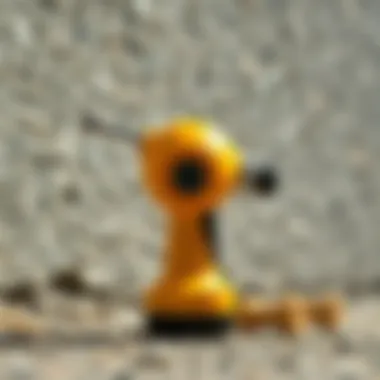
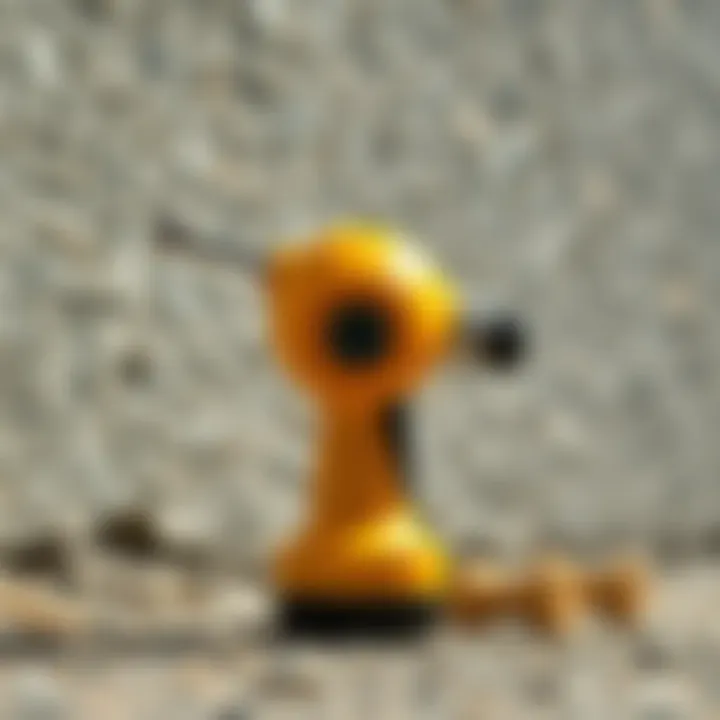
Health Risks Associated with Mold Exposure
The presence of mold behind stucco isn’t solely a structural issue—it can pose significant health risks to individuals. Understanding these risks is a vital part of managing mold effectively.
- Allergic Reactions: Many individuals are sensitive to mold spores. Exposure can lead to symptoms such as sneezing, runny nose, itchy eyes, and skin rashes. For some, even a brief encounter with mold can trigger significant allergic responses.
- Respiratory Issues: Mold can affect breathing, particularly in individuals with pre-existing conditions like asthma or chronic respiratory diseases. Inhalation of mold spores can cause or worsen respiratory illnesses, leading to coughing, wheezing, and difficulty breathing.
- Toxic Mold: Certain mold varieties, such as Stachybotrys chartarum, produce mycotoxins that can have more severe effects on health, including headaches, fatigue, and long-term neurological symptoms. While not all molds are toxic, the potential for harm should not be underestimated.
- Vulnerable Populations: Children, the elderly, and individuals with weakened immune systems are particularly susceptible to the adverse effects of mold exposure. For these groups, even minor infestations can lead to serious health complications.
"Taking proactive measures to manage mold is crucial for preserving health and safety at home."
For more detailed health information regarding mold exposure, consider checking out resources from the CDC and EPA.
Being aware and informed allows for better decisions, reducing the risk of moldy trouble down the line.
Initial Assessment for Mold Behind Stucco
Before diving headlong into the murky waters of mold investigation, it's crucial to understand the importance of an initial assessment when it comes to mold behind stucco. This first step often makes a significant difference in how effectively one can tackle a mold problem. Not only does it set the groundwork for further investigations, but it also helps prevent the issue from escalating. A proper assessment can save homeowners time, money, and hassle in the long run. Understanding the current state of your home's structure, moisture levels, and any visible signs of mold can illuminate pathways to effective solutions.
Visual Inspection Techniques
Checking for discoloration
Checking for discoloration on stucco surfaces is a primary visual inspection technique during an initial assessment. Discoloration can manifest as dark spots or blotches, indicating potential mold presence. This technique is beneficial because it offers immediate visual cues—looking for irregularities is quite straightforward. The key characteristic here is that discoloration often occurs due to moisture retention, which serves as a feeding ground for mold.
The unique feature of this method is its accessibility. Most homeowners can easily identify discoloration without needing specialized training or equipment, making it a popular choice for DIY inspections. However, it is essential to remember that not all discoloration indicates mold; it might also be due to dirt or other environmental factors.
Observing moisture accumulation
Moisture accumulation is another crucial aspect in assessing the potential for mold behind stucco. Observing areas that consistently feel damp or show signs of water pooling can point to locations where mold might thrive. The characteristic of this method lies in its practical approach—understanding moisture behavior is one of the core elements in mold growth.
This observation is beneficial because wetness around stucco usually indicates either a drainage issue or condensation problem, two primary triggers for mold issues. The unique advantage of focusing on moisture accumulation is that it often allows for preventative measures to be taken early on. However, homeowners may find it harder to assess moisture levels without specific tools for measuring humidity or moisture content.
Examining areas of peeling paint
Peeling paint is another symptom that shouldn’t be brushed aside in the initial assessment. This condition usually signals one of two problems: moisture intrusion or a failure in adhesion due to degraded material. Examining such areas gives a clear indication of underlying issues. The key characteristic here is that peeling paint often turns out to be more than just aesthetic; it can be an indicator of deteriorating surfaces, which may harbor mold.
This examination is popular among homeowners because it's relatively easy to spot. It's like looking for a sore spot—if there are visual signs of a problem, it usually means there’s more going on underneath. The distinct advantage of this technique lies in its ability to point out compromised integrity of the stucco. That being said, while peeling paint can be telling, it might sometimes distract from other underlying issues you may want to inspect—it should serve as part of a broader strategy rather than a solitary focus.
Utilizing Technology for Detection
Moisture meters
When it comes to accurately determining moisture levels, moisture meters are invaluable tools for professional inspections. They help in quantifying the amount of moisture present, thereby enabling a more focused approach to mold assessment. A moisture meter’s ability to quantify moisture can be a lifesaver, as it provides solid data rather than relying solely on subjective observations.
This method of using moisture meters is popular due to its reliability. The unique feature of these devices is their efficiency in providing immediate readings, which is essential in any mold-related investigation. One noticeable downside is that these devices require some investment, which may not be appealing for everyone, especially if they only wish to conduct one-time assessments.
Infrared cameras
Infrared cameras serve as advanced tools for detecting hidden moisture behind the walls and helping identify potential mold hotspots without invasive measures. The importance of this technique lies in its ability to reveal temperature differences, which can signal moisture issues that aren’t visible to the naked eye. Their use adds a level of thoroughness that complements visual and manual inspections.
Infrared cameras offer a considerable advantage because they cover larger areas quickly, pinpointing potential problem spots. However, using these cameras typically requires training to interpret the results accurately, which can be a drawback for a homeowner trying to DIY their investigations.
Thermal imaging
Thermal imaging complements moisture detection by showcasing temperature variations across building surfaces, helping uncover issues that may not yet show physical signs of damage. This method is appreciated for its non-invasive nature, allowing inspectors to look beneath the surface without needing to make physical access points, making it a very appealing option.
The key characteristic of thermal imaging is its ability to visualize thermal patterns, pinpointing areas where moisture could be trapped. This distinct feature is advantageous as it allows for a broader scope of inspection in a shorter time—however, like infrared cameras, this technology may also necessitate professional training for accurate interpretation.
Methods for Creating Access Points
Creating access points in stucco walls is a crucial step in checking for mold. When mold is suspected, simply looking at the outside won't do the trick. You need to get behind the stucco to understand the full extent of any potential damage. Having proper access points allows for a thorough inspection, making it easier to catch problems early before they escalate into significant health hazards and costly repairs.
The process of creating these points should not be taken lightly. It involves tools, techniques, and safety measures that ensure the job is done correctly while minimizing risk. Careful planning for these access points will lead to more accurate inspection results and a clearer understanding of what course of action to take moving forward.
Cutting Access Holes in Stucco
Tools needed for access
When it comes to cutting through stucco, using the right tools is imperative. You’ll need a few essential items such as a utility knife, a circular saw with a masonry blade, or even a hand-held oscillating tool. Each of these tools brings something different to the table in terms of precision and effectiveness.
- The utility knife is perfect for scoring the surface before making deeper cuts. It ensures cleaner edges and reduces the risk of chipping.
- A circular saw with a masonry blade can provide swift, clean cuts for larger access points, but it requires careful handling.
- An oscillating tool is versatile and ideal for tighter spaces.
Choosing the right tool can significantly reduce the hassle during this process, but it’s important to balance efficiency with safety and control.
Safety precautions during cutting
Safety cannot be overstated when you’re about to cut into anything, especially a building's exterior. First things first, wearing safety goggles to protect your eyes from debris is a must. Additionally, dust masks will help avoid inhaling any particles released during cutting.
Moreover, ensure that your workspace is clear of any obstacles that could become a tripping hazard or interfere with your cutting.
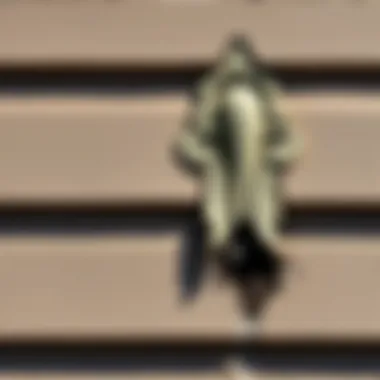
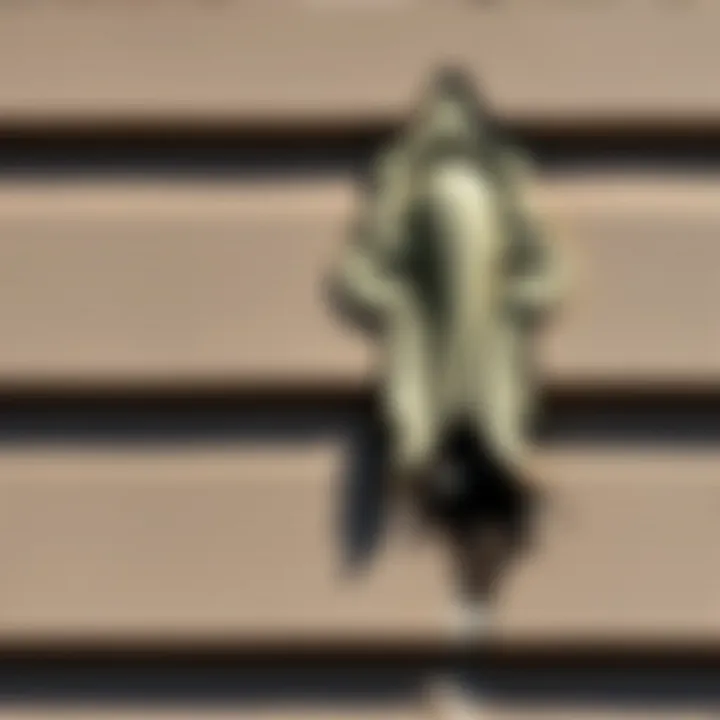
- Work gloves are essential as well to protect your hands while handling tools and materials.
- Finally, consider using ear protection if you're using particularly loud tools, like a circular saw.
By adhering to these precautions, you’ll create a safer working environment, reducing the likelihood of injury during the cutting process.
Repairing access points afterward
Once you’ve done the hard work of checking for mold behind the stucco, you need to think about how to close up those access points. Repairing the holes isn’t just about aesthetics; it’s about maintaining the structural integrity of your home and preventing future water buildup, which could lead to even more mold growth.
You will usually need some stucco patching material, a trowel, and possibly some paint to match the patched area with the rest of your wall. After applying the patch, allow it to dry thoroughly to prevent moisture retention. Then, smoothing it out and applying a paint coat that matches the existing color is crucial for a seamless look.
Paying attention to how you repair these points means protecting your home long-term and minimizes the chances of encountering similar mold issues down the line.
Inspecting Behind the Stucco
Having access to the area behind the stucco is just one part of the puzzle; knowing how to inspect once you’re there is crucial.
Visual assessment behind the walls
During visual assessments, you're looking for signs of moisture or mold growth that can't be seen from the exterior. Common indicators include stains, discoloration, and any visible mold spores.
You might also want to consider using a flashlight to spot areas that might otherwise be missed by the naked eye. Look closely at the materials used within your walls. Wood framing, for example, is notoriously susceptible to mold if it has been exposed to moisture. Keeping a sharp eye out will save you a future headache if you can catch any issues right away.
Collecting samples for analysis
If you’ve confirmed mold presence visually, gathering samples becomes necessary to identify the type and extent of the problem. Collect samples carefully with gloves and a clean tool to avoid contamination. You may use swab kits or even sticky tape to lift samples from surfaces and send them to a lab for analysis.
This step is a game-changer; knowing precisely what you're dealing with can inform your remediation strategies moving forward.
Understanding what to look for
Familiarizing yourself with common mold types can help during your inspection. For instance, black mold – known scientifically as Stachybotrys chartarum – has distinct characteristics and can pose significant health risks.
Recognizing warning signs, such as musty odors and obvious growth patterns, can inform your decisions in how to address the mold issue appropriately. Educating yourself on these elements will enhance your inspection abilities, allowing you to take prompt action when needed.
Mold Testing and Analysis
Identifying the presence of mold behind stucco requires more than just a hunch or some telltale signs like a musty odor or discoloration. Mold testing and analysis plays a pivotal role in understanding the extent of the infestation and informing your next steps. Knowing the types of tests available, as well as how to interpret the results, can save both time and headache. This section unfolds essential information on the varied methods of mold testing and helps you make informed decisions regarding mold management.
Types of Mold Tests Available
When it comes to testing for mold, several methods exist, each with its own strengths and limitations. Let’s dive into the prominent types one by one:
Air Sampling
Air sampling stands out as one of the most popular methods for mold detection. It involves capturing airborne particles and determining mold spores’ concentration in a specific area. Not only does it help gauge the presence of mold, but it also sheds light on the types present. The primary advantage of air sampling lies in its ability to provide a snapshot of air quality, especially in living spaces.
However, it comes with its own set of challenges; for instance, ambient conditions can affect results, sometimes leading to false positives or negatives. When utilized effectively, though, it offers a cost-effective and non-invasive way to identify issues.
Surface Sampling
Surface sampling examines mold growth directly on surfaces, typically using tape lifts or swabs. This method is particularly useful when visible signs of mold exist. Its main characteristic is its straightforward approach: you take a sample from the affected area and send it to the lab for analysis. One of the primary benefits here is that it allows for targeted testing, prioritizing problem areas.
Despite its advantages, surface sampling may miss suspended spores in the air, which can lead to an incomplete understanding of the mold issue. It’s crucial, then, to combine it with other methods for comprehensive analysis.
Bulk Sampling
Bulk sampling involves collecting materials suspected of harboring mold—think bits of drywall, wood, or insulation. This method is beneficial because it physically removes a section of the material, allowing for thorough examination. It’s often used where mold is suspected to be growing within walls.
On the flip side, it's more invasive than surface or air sampling, as it often leads to structural changes and may result in repair costs. Nonetheless, this method provides deep insights into mold growth patterns and the extent of contamination, making it a valuable tool in certain scenarios.
Interpreting Test Results
Once you've conducted your tests, the next step is understanding what those results mean. Mold testing isn’t just about numbers; it’s about making informed decisions. A high concentration of certain spores could suggest immediate action is necessary, while lower levels might allow for continued monitoring.
Seek the assistance of qualified professionals to interpret results correctly. They can help you distinguish between harmless mold species and potentially harmful ones, guiding you toward appropriate remediation methods. Always remember, just because some mold shows up in tests doesn’t necessarily warrant alarm—it’s about how it fits into the bigger picture of your home’s health.
Understanding the specifics of mold testing goes a long way in ensuring your home doesn't become a breeding ground for mold. Stay informed, stay proactive.
Remediation Strategies for Mold
Addressing mold behind stucco is crucial for the integrity of the structure and the health of the inhabitants. Remediation strategies offer various methods to eliminate mold while preventing its recurrence. Different approaches cater to a range of severities in mold infestations, which makes understanding these strategies all the more important for homeowners.
DIY Mold Removal Techniques
Using chemical solutions
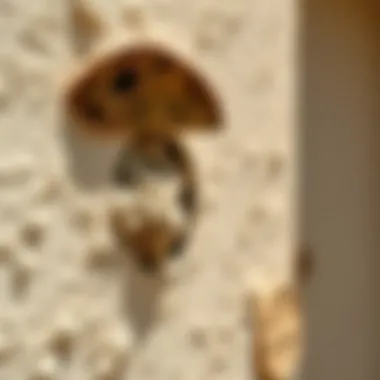
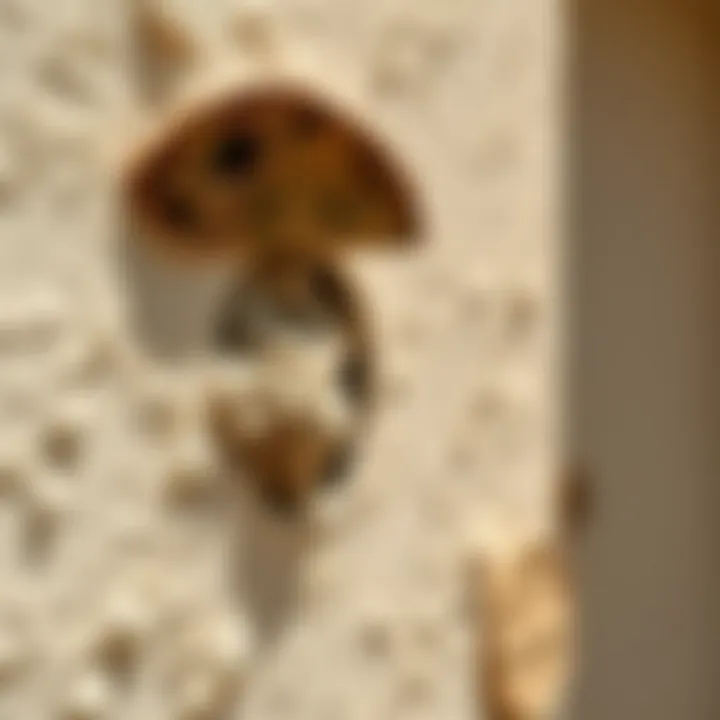
Chemical mold removers are often the go-to for homeowners tackling infestations. These solutions target fungus effectively and eradicate it quickly. A major characteristic is their fast-acting nature, leading to visible results in a short time frame. If used properly, they can make a significant difference. However, caution is key. Many chemical solutions contain harsh components, so it’s vital to follow instructions closely to ensure safety and effectiveness.
One notable advantage is that they’re often readily available for purchase from local hardware stores or online. Some of them work by penetrating the material and attacking mold at the source. This feature makes chemical options popular among those who want a and effective solution in a pinch. Despite the benefits, it’s worth noting that improper use can lead to health risks. Therefore, well-ventilated environments and protective gear are essential when employing chemical treatments.
Natural remediation methods
Natural methods tend to be a more eco-friendly choice for mold remediation. Many people lean toward this option due to their minimal health risks and environmental impact. Common natural solutions include vinegar, baking soda, and tea tree oil, which can tackle mold without harming pets or children. This approach reflects a key characteristic of focusing on sustainability, making it a favored choice among those who prioritize green living.
Another unique feature of these methods is that they are often cost-effective and can be made from items commonly found in households. However, natural solutions may not always be as fast or strong as chemical counterparts, especially in severe cases. Homeowners need to recognize when the mold might be too tenacious for these gentler approaches. Choosing the right method often hinges on balancing efficacy with safety.
Safety measures during cleaning
Safety must never be overlooked when dealing with mold removal. This aspect is paramount, as mold can produce allergens and irritants that are harmful to health. Wearing protective face masks, gloves, and goggles is essential to safeguard against exposure during cleaning. Clear labeling and proper storage of mold removal products also help keep the environment safe for everyone involved.
A notable characteristic of safety measures is that they contribute to ensuring a cleaner, healthier work environment. For example, establishing proper ventilation and controlling dust can also mitigate risks. This aspect continues to be a crucial consideration when combining DIY methods with professional advice, as even the best intentions can lead to harmful outcomes without the right precautions.
Professional Mold Remediation Services
Choosing the right specialist
Not all mold remediation services are created equal. When homeowners decide to call in professionals, it's essential to choose the right specialist. Look for licensed experts with good reputations, preferably those who've been in the business for a while. A vital characteristic to assess is their experience and established methods for tackling mold problems. Homeowners benefit from qualified professionals who can provide tailored solutions that far exceed DIY results.
Moreover, relying on specialists typically ensures the job is done right the first time. This not only saves money in the long run but also protects against recurrent issues. On the flip side, the primary disadvantages of hiring external help revolve around costs and trust. Some individuals may find this process overwhelming, especially if they’ve never dealt with such problems before.
The remediation process
The remediation process managed by professionals tends to be thorough and effective. Typically, it encompasses a detailed assessment of the mold issue followed by a step-by-step approach to ensure comprehensive cleaning. The key characteristic of this process lies in its methodical nature. Professionals often use advanced techniques and sophisticated equipment like negative air machines to contain the mold and prevent it from exceeding into other spaces.
One unique feature of this process is that it often also includes moisture control measures, potentially addressing the underlying causes of mold growth. As such, the focus is not just on removing existing mold but preventing future incidents. While the initial investment may seem steep for some homeowners, the potential health benefits and peace of mind may outweigh the costs.
Preventative measures post-remediation
After professional mold remediation, implementing preventative measures is crucial for long-term success. This involves improving ventilation, managing humidity levels, and conducting regular inspections. The primary characteristic of these measures is proactive in preventing mold from reappearing. Utilizing dehumidifiers or exhaust fans is a practical step toward ensuring a dry environment.
A unique feature of implementing preventative tactics is that they can often be done easily and cost-effectively, preserving the health of the home without breaking the bank. Homeowners need to integrate these practices into their routine maintenance habits. While the key goal is to prevent the conditions conducive to mold growth, the downside may come in forgetting to stay consistent, which could put all efforts to waste.
Preventing Mold Growth Behind Stucco
Understanding how to prevent mold from taking hold behind your stucco is crucial for safeguarding both your home and your health. Mold thrives in warm, moist environments. Given stucco's porous nature, a layer of protective measures can have a significant impact on reducing the chances of mold growth.
Key Benefits of Prevention
By preventing mold, you not only protect the structural integrity of your home but also enhance the overall indoor air quality. Reducing mold exposure can lead to better health outcomes, especially for those with respiratory issues. In essence, it’s not just about saving your walls; it’s also about keeping your family safe and sound.
Improving Ventilation
Proper ventilation is a game changer when it comes to keeping your home dry. When stucco is installed, it often traps moisture inside. This can lead to a damp oasis for mold spores. To combat this, introducing air circulation can make a world of difference.
- Natural Airflow
- Mechanical Ventilation
- Open windows and doors during dry days.
- Use exhaust fans in kitchens and bathrooms to dispel humid air.
- Invest in a whole-house ventilation system.
- Consider air dehumidifiers for particularly humid areas.
By ensuring that air can circulate freely, you help to reduce the moisture content in the walls and behind the stucco.
Regular Maintenance and Inspections
Staying one step ahead of the game requires consistent maintenance. It’s like checking the oil in your car—do it regularly and you’ll avoid bigger problems down the road. Here’s how you can keep the mold at bay:
- Routine Inspections
Schedule routine inspections of your home’s exterior, especially after heavy rain or snow melts. Look for signs of cracks or gaps in the stucco. - Sealant Applications
Make sure to reapply sealant or paint designed for outdoor use every few years. This protects the stucco from absorbing too much moisture.
Preventing mold is easier than cleaning it up.
By weaving these practices into the fabric of your home upkeep routine, you’re setting the stage for a mold-resistant home. Think of it as a proactive approach to maintaining your property’s health, akin to preventative healthcare.
The End
Mold management is a critical aspect of maintaining the integrity and safety of homes, particularly those clad in stucco. Understanding how to effectively check for mold behind stucco not only aids in preserving the aesthetic appeal of a property, but also safeguards the health of its inhabitants. Mold can go unnoticed for long periods, sneaking in through gaps and areas where moisture lingers.
Importance of Addressing Mold Issues
Addressing mold presence promptly can mitigate numerous negative consequences. For homeowners, mold exposure can lead to various health complications, especially for children and elderly individuals. It doesn’t just pose health risks; it can also impact the structural integrity of your home.
Benefits of Managing Mold:
- Increased Indoor Air Quality: Regular inspections and mold management ensure fresh air circulation, reducing allergens and irritants in your living space.
- Preservation of Property Value: Homes affected by mold often see a decline in market value. Maintaining a mold-free environment helps in safeguarding your investment.
- Avoidance of Extensive Repair Costs: Early detection translates into smaller, more manageable repairs instead of facing overwhelming restoration efforts.
Final Thoughts on Mold Management
When it comes to mold behind stucco, awareness and readiness are your greatest allies. Approaching the issue with a proactive mindset means recognizing symptoms and taking action before the situation escalates. Furthermore, mold checks can be undertaken during routine home maintenance routines, ensuring that it becomes an integral part of your home care checklist.
As we wrap our exploration of mold management in stucco environments, remember that even a small amount of moisture is enough for mold to settle in. Regular inspections and taking appropriate action can help keep your home safe, fresh, and welcoming. To further deepen your understanding, consider using resources from EPA’s Mold Information or exploring discussions about mold management on platforms like Reddit.
By putting in the effort to check for mold behind stucco, you’re not just preventing a potential annoyance but also taking a significant step towards ensuring a safe haven for yourself and your family.



